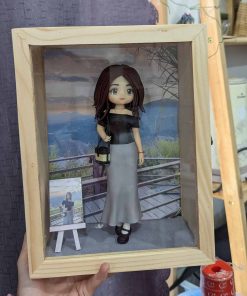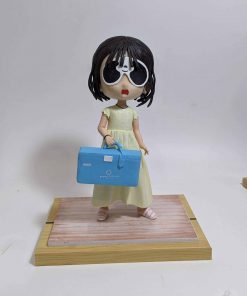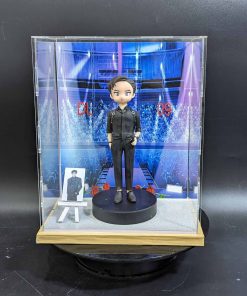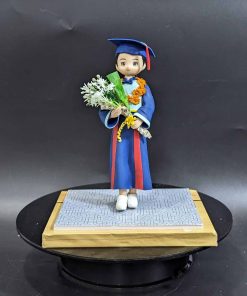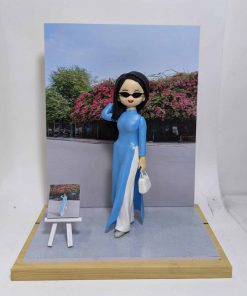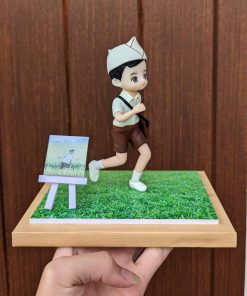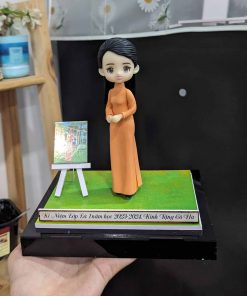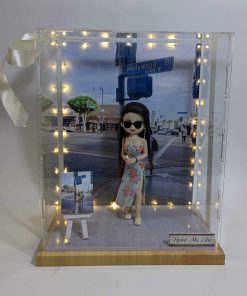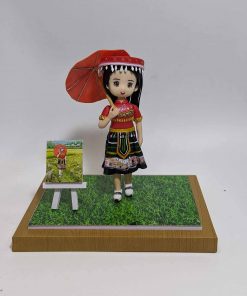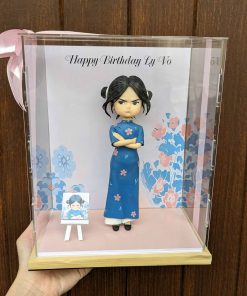❤️ make 3d statues 22.6 ❤️
Liên hệ
- Cam kết sản phẩm đúng như trong mô tả
- Chất lượng và độ bền sản phẩm cao nhất
- Mức giá cạnh tranh nhất
- Giao hàng nhanh chóng toàn quốc
- Tư vấn nhiệt tình, giải đáp mọi thắc mắc của khách hàng
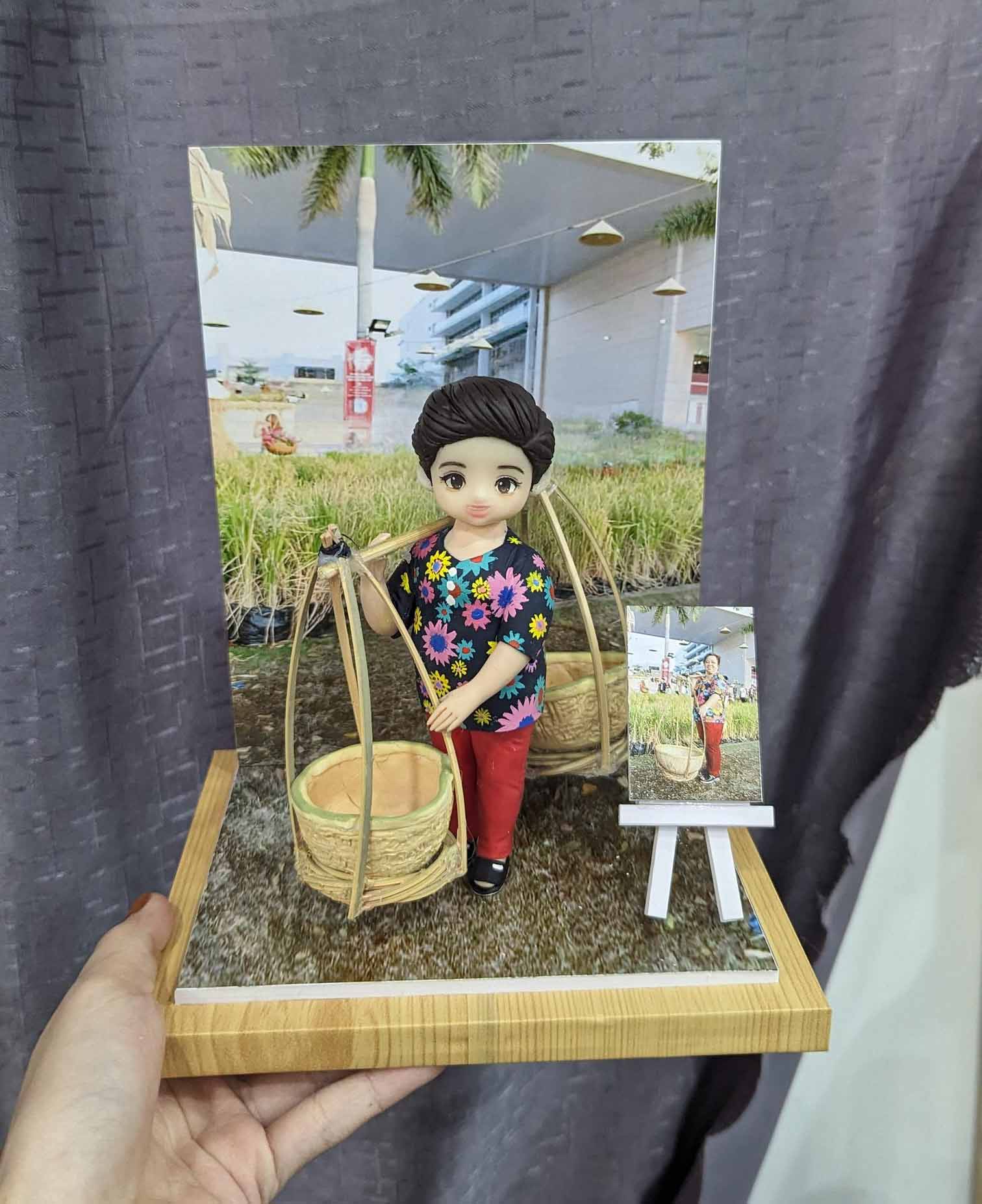
Tượng chibi 3D làm theo yêu cầu:
– Bảng giá: Xem tại đây
– Báo chí nói về Tượng Chibi Tamy:
* HTV7: https://bit.ly/3DPN3Sn
* Báo dân trí: https://bit.ly/3MC5i1r
* Báo vnexpress: https://bit.ly/3VwlLZ7
* Báo công luận: https://bit.ly/3ezJhnv
*Báo thanh niên: https://bit.ly/3SmEunh
* Báo tuổi trẻ: https://bit.ly/3CSlDLb
* Báo 24h.com: https://bit.ly/3f0YEpu
* kênh ytb talkshow: https://bit.ly/3Tn33Sz
* VTC: https://bit.ly/3TPCzcg
– Thời gian: Từ 2 ngày đến 10 ngày , tùy số lượng (tùy sản phẩm).
– Chất liệu tượng: Đất sét tạo hình, không độc hại, khô cứng và dẻo, bền màu theo năm tháng.
– Độ bền sản phẩm: Trên 10 năm.
– Loại tượng: Có 3 loại ( Chibi – Doll tả thực – Điêu khắc truyền thần).
– Kích thước của tượng: 10cm đến 20cm – tính chiều cao tượng từ đầu đến chân.
– Phụ kiện: Ảnh nền, hộp mica, chụp thủy tinh, nhựa giả gỗ,v.v
– Dựng cảnh: Nếu có yêu cầu.
– Bảo hành : Một lần trọn đời.
– Quy cách đóng gói : Thùng carton, mốp xốp, chống va đập, đảm bảo hàng nguyên vẹn đến tay khách hàng.
– Giao hàng : HCM + Toàn Quốc + Các nước khác.
– Zalo :
Mr Đức 0783893888
Miss Như: 0898678587
-Địa chỉ : 63/8 Trần Văn Ơn , Tân Sơn Nhì , Tân Phú , HCM
- Website:
http://quasinhnhat888.com/
http://tuongchibi.com/
https://www.facebook.com/tuongchibitamy
Creating 3D statues is a fascinating and intricate process that combines precision, creativity, and technical skill. From designing the initial concept to bringing it to life through sculpting and printing, each step involves careful consideration and attention to detail. The ability to bring a two-dimensional idea into a three-dimensional form provides artists and designers with a unique opportunity to explore new possibilities and push the boundaries of traditional art forms. In this paragraph, we will delve into the various stages of making 3D statues and discuss the impact that this innovative technique has had on the art world.
The first step in creating a 3D statue is conceptualizing the design. Artists and designers begin by sketching out their ideas and exploring different shapes, forms, and compositions. This stage allows them to experiment with various concepts and refine their vision before moving on to the next stage. Once the design is finalized, the artist then moves on to the sculpting process. This involves using digital software to sculpt the statue in a virtual environment, allowing for precise control over every detail and dimension. The artist can manipulate the shape, texture, and size of the statue with ease, tweaking the design until it meets their exact specifications.
After the digital sculpting process is complete, the next step is to prepare the model for printing. This involves converting the digital design into a physical form that can be produced using a 3D printer. The artist must consider factors such as material selection, printing resolution, and printing time to ensure that the final product meets their expectations. Once the model is ready, it is sent to the 3D printer, where the statue is slowly built up layer by layer using a process known as additive manufacturing. This allows for the creation of complex shapes and intricate details that would be difficult or impossible to achieve through traditional sculpting methods.
The final stage in the process of making a 3D statue is post-processing. This involves cleaning up the printed model, removing any support structures, and applying finishes such as painting or polishing. This stage is crucial for bringing out the best in the statue, enhancing its appearance and ensuring that it is ready for display. Once the post-processing is complete, the 3D statue is ready to be showcased to the world, where it can be appreciated and admired for its innovative design and craftsmanship. Overall, the process of making 3D statues combines artistry, technology, and craftsmanship to create stunning works of art that push the boundaries of traditional sculpture and open up new possibilities for artistic expression.
In conclusion, the creation of 3D statues represents a thrilling combination of creativity, precision, and innovation that has transformed the world of art and design. Through digital sculpting, additive manufacturing, and post-processing techniques, artists and designers are able to bring their ideas to life in three-dimensional form, creating stunning statues that captivate viewers and push the boundaries of traditional art forms. The ability to explore new shapes, forms, and textures in a virtual environment allows for endless possibilities and opens up new avenues for artistic expression. As technology continues to advance and evolve, the possibilities for creating 3D statues will only continue to grow, leading to even more exciting and groundbreaking works of art in the future.



